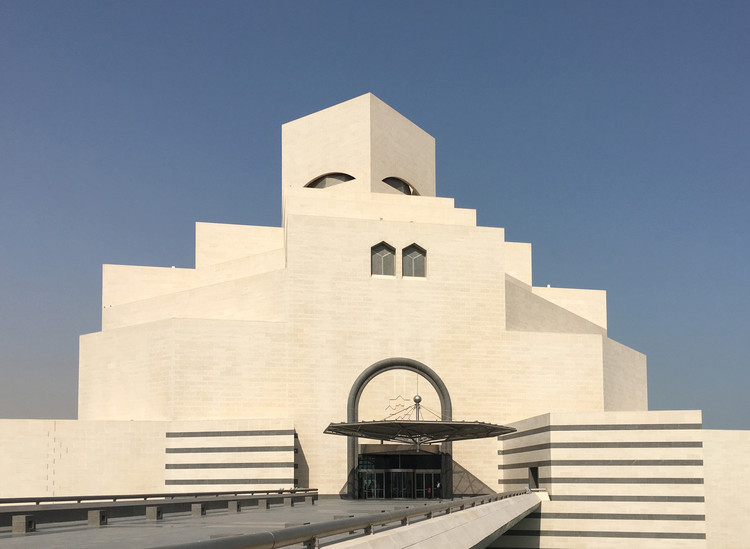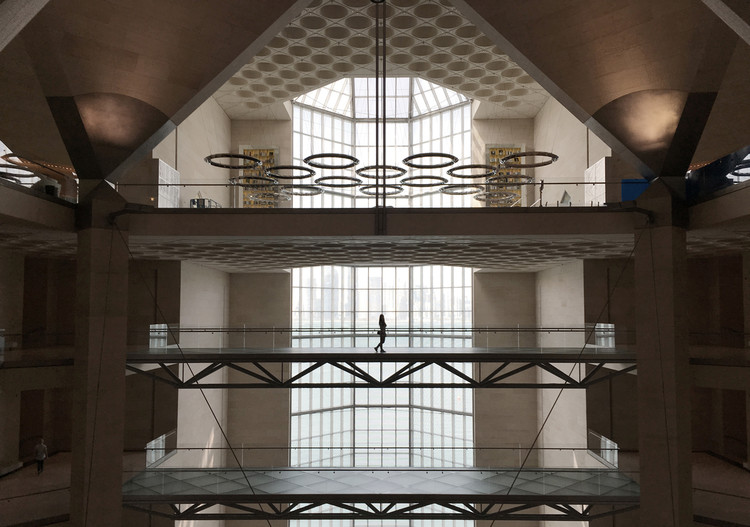#donotsettle is an online video project created by Wahyu Pratomo and Kris Provoost about architecture and the way it is perceived by its users. Having published a number of videos on ArchDaily over the past two years, Pramoto and Provoost are now launching an exclusive column, “#donotsettle extra,” which will accompany some of their #donotsettle videos with in-depth textual analysis of the buildings they visit.
In our first installment we are taking you to Doha, the capital of Qatar, where we visited the Museum of Islamic Art. For some years, this museum was the only architecture fix you could find in Doha, but recently this has changed, with projects almost completed by Jean Nouvel and Rem Koolhaas, and will continue to change leading up to the 2022 World Cup. The building was designed by IM Pei who, when the building was constructed in the mid-2000s, was retired but was persuaded to commit his time to design this prominent museum. And prominent it for sure is. Mister Pei, you know how to make your building stand out. Standing off the mainland, a solid natural stone structure rises out of the water.


Standing off the Doha corniche, the approach towards the museum is, as always, an important part of how a building is perceived. During that approach, we noticed some similarities with another building: last summer, we visited Suzhou where we observed another museum IM Pei had designed. The Suzhou Museum isn’t just any museum--as Suzhou was IM Pei’s hometown as a child, it must have had some special importance to him. The design clearly played a significant role in the later work he did on the Museum of Islamic Art. While the latter is larger in scale, we notice a comparable language of orthogonal and diagonal lines. The floor plans of both buildings have strong similarities. However, a different exterior material distinguishes the two designs from each other, so that even though they are similar in shape, both truly feel in place in their respective cultures and surroundings.

While our video hopefully makes it easier to understand the key features of the design, let this text be a roundup of 4 topics we found interesting. Orientation is the key driver of this building. From the moment you enter the premises, you only feel like going forward, and that movement forward eventually leads you to the image Qatar wants you to remember: the rising skyline of Doha, an image every visitor is bound to take a snapshot of, architecture junkie or not.

The circulation is simple, a large atrium with walkways around. Not that ingenious right? However, no matter where you stand, your eyes go to that humongous window giving you that image they want you to see. Yes indeed, the rising Doha Skyline.

From outside, the shape of the building is monolithic, introverted, strong yet complex. However from the interior it is hollow, and this brings your eyes up to that geometric skylight--another angle everybody will surely take a photo of or at least get lost in.

The building’s materiality is one of blending in and of contrast. Is it even possible to combine these two opposites? Doha will always have that sandy color, no matter how many glazed skyscrapers they build. The natural stone color will blend right into that. Then, however, the contrast starts when you look closer: the strong, lively blue of the Arabian Gulf makes this museum stand out.

While writing this, I can’t help but feel a bit contradictory. One sentence speaks about how this masterpiece blends in, while the next sentence explains how this building stands out. These are complete opposites, and yet the design was undoubtedly planned this way. We have always considered Doha as being a version of the Middle East which doesn’t try so hard to stand out. But thinking deeply about it, they do try to stand out, just in a much more refined and intellectual way. That window, the view from anywhere in the museum, the lightweight bridges floating in space. These are their way of saying “we welcome you, and we want you to see what we have been doing the past decade putting our city on the map.”

Doha, you revealed yourself during our 24-hour layover. Qatar, we will be flying to your capital again once your Jean Nouvel museum opens. We would love to step foot in what is guaranteed to be another amazing architectural experience. See you then!
#donotsettle is a project about Architecture and Experience. Watch 100+ more videos related to Architecture on our YouTube Channel, or see what we are up to on Instagram and Facebook.














